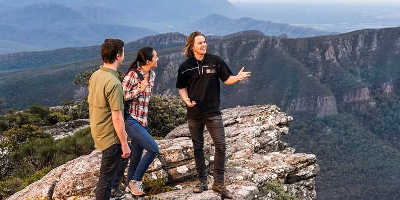
What is an echidna?
Written by: Cameron Ward
Published: 01/31/2017
Reading time: 3 mins
They are one of Australia’s most unusual animals, so see if you can find them along the Great Ocean Road!
Echidnas are small creatures native to Australia, Tasmania, and New Guinea, and can be found along the Great Ocean Road amongst other parts of the country.
Named after Echidna, a Greek mythological creature who had half the body of a woman and half the body of a snake, the echidna has many of the same qualities as both a mammal and a reptile.
First of all, it has spines like a porcupine, a pouch like a kangaroo – another of Australia’s native critters – and lays eggs like a reptile. And, if we’re getting specific, it also has a beak like a bird.
What Echidnas Look Like
Echidnas are strange-looking creatures. About medium in size, they are covered with coarse hair and spines – much like a porcupine – but they actually resemble South American anteaters visually. They tend to come in black and brown varieties (though a fair few cases of albino Echidnas have been logged), with pink eyes and white spines. Their snouts are long and skinny, and they use them as both a nose and a mouth.
The Diet of the Echidna
Echidnas mainly survive on ants and termites. As they have no teeth to speak of, they grind down food between the base of their mouth and their tongues.
Where to Find Echidnas
Though they are found predominantly in Australia, Tasmania, and warmer countries, they do not like extreme temperatures and will seek out caves and rock shelters to hide away from harsh weather conditions. You’ll mainly find them in forest and woodlands, where they burrow under vegetation, roots, and piles of leaves to keep out of the heat, and will sometimes – if they’re feeling brave – hide in the burrows of rabbits and wombats.
Echidnas are, without a doubt, one of the strangest creatures native to Australia, and they continue to be particularly elusive. The more scientists research them, the more they find out about the unique quirks these creatures have.
Fun Facts About Echidnas
-
1. They live slow and long
Echidnas have the lowest body temperature of any mammal at 32 degrees Celsius, and their temperature isn’t controlled in the normal way. They also live up to 50 years due to their low body temperature and slow metabolism.
-
2. They have strange brains
Echidnas boast incredibly large brains for their body size, partly because half of it is made up of an enlarged neocortex which usually only takes up about 30% of most other mammals.
-
3. Their spines are actually hair
The spines of the Echidna are actually hairs, while fur in between these unique spines provides them with insulation.
-
4. They lay eggs
That’s right, along with the platypus, the echidna is one of the rare mammals that lay eggs when giving birth! They only lay one at once, with the egg being soft-shelled and leathery, and after ten days within the mother’s pouch, the jellybean sized baby hatches, spending more time developing further in the pouch.









